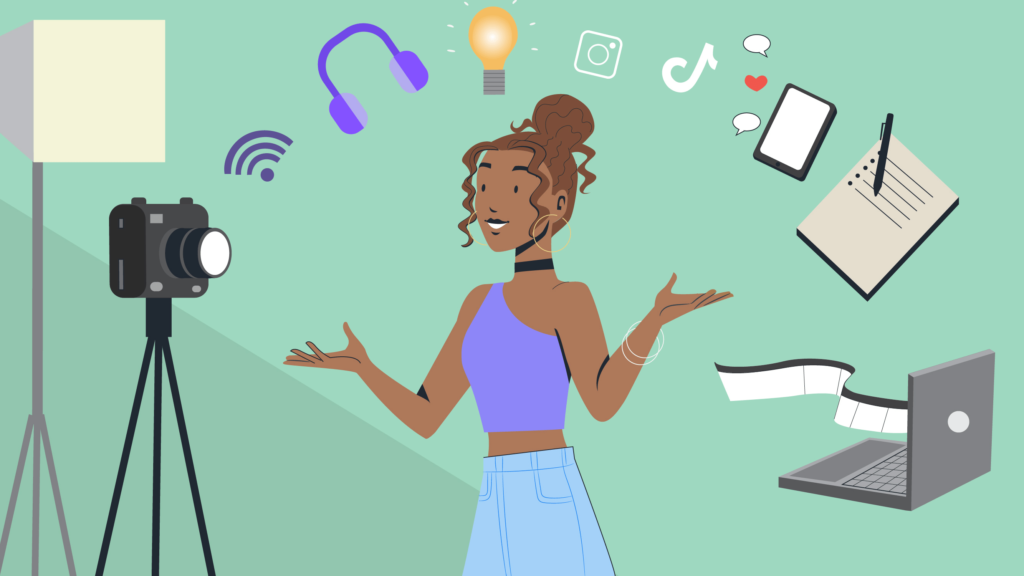What Is Generative AI, Really?
Generative AI refers to models that can create new content — text, images, video, audio — that mimics human output. Unlike traditional tools that follow rules, generative models learn patterns from vast data and produce unique results.
Think of it not as a tool, but a creative collaborator with unlimited memory and zero fatigue.

1. Cultural Shift: AI as Co-Creator, Not Competitor
The fear that AI will “replace creators” overlooks a deeper truth: it will redefine what it means to create.
Creators won’t disappear — but they’ll evolve.
Much like photographers adopted digital cameras, writers will embrace AI to amplify human insight, not erase it.
✅ Creativity becomes more about curation, insight, and emotional intelligence — AI handles the rest.
2. The Economics of Infinite Content
We are entering an age of infinite supply. AI can:
Write 100 variations of an ad headline
Produce blog posts for every niche on Earth
Generate personalized videos for every customer
But infinite supply changes the game:
Scarcity shifts from content to attention.
The winners are those who create trust, voice, and connection — not just volume.
3. Modular Content Creation
AI enables modular content strategies:
One long-form piece (e.g., a whitepaper) can be auto-transformed into:
5 blogs
20 LinkedIn posts
10 Reels
A podcast script
An infographic
This isn’t just repurposing — it’s programmatic creativity.
✅ More reach, less burnout.
4. Democratization of Creation
Previously:
Professional tools were expensive
Skilled creatives were gatekeepers
Now:
A student with ChatGPT and Canva can compete with a creative agency
Language, location, or lack of formal training is no longer a barrier
✅ Creativity is now about access, not pedigree.
5. Interactive, Real-Time Content
Generative AI powers:
-
Dynamic storytelling (content that adapts based on user input)
-
Hyper-personalized videos (e.g., using your name, location, or behavior)
-
Conversational content (AI-generated chatbots that feel like characters)
Content isn’t just consumed. It’s experienced.
6. Creativity at the Edge of Logic
AI often combines concepts humans wouldn’t think to connect.
For example:
Merging finance + poetry to teach budgeting
Using ancient philosophy + UX design to enhance digital wellbeing
This opens up a new frontier of lateral thinking.
✅ The AI-human duo creates ideas that neither alone could imagine.
7. Ethics, Bias & Authenticity Concerns
With power comes problems:
AI can hallucinate facts
It may reflect societal biases from its training data
Deepfakes & AI spam threaten trust
Creators of the future will be part-artist, part-ethicist.
Verification, transparency, and ethical content design will become core skills.
8. The Platform Arms Race
Platforms like YouTube, Meta, LinkedIn, and Google are embedding generative AI:
-
LinkedIn auto-suggests post intros
-
Meta uses AI to create auto-ads
-
Google’s Search Generative Experience (SGE) rewrites how users consume answers
If you’re not learning how AI is used by platforms, you’re falling behind on visibility.
9. From Content to IP: A Creator’s Advantage
In an AI-heavy world, your unique POV becomes your moat.
Anyone can prompt ChatGPT.
Few can combine lived experience, emotion, and narrative like you can.
✅ Your story + AI’s structure = unstoppable content.
10. The Inevitable Future: AI-Native Creators
A new wave is emerging: creators born in the AI era who don’t see AI as a tool — but as an extension of their mind.
These creators:
-
Build brands in weeks
-
Launch newsletters, videos, books simultaneously
-
Understand data + aesthetics + automation
They’re not fighting AI. They’re flying with it.

How useful was this post?
Click on a star to rate it!
Average rating 0 / 5. Vote count: 0
No votes so far! Be the first to rate this post.